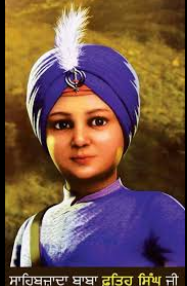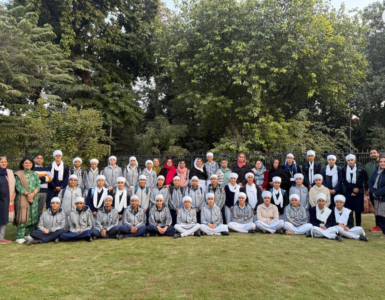This is an email encapsulating, which in essence, is about three interesting stories.
Dr Vijay Sherry Chand’s email
Fondly recalling Dr Vijay Sherry Chand’s last visit to Akal Academy, and the email that he sent is recounted as below:
I have just returned from Amritsar after an enlightening visit to the Akal Academy, Chugawan, and take this opportunity to specially thank you, Mr. Jaspreet Singhji, Mr. Jagdeep and Principal Gursharanjit Kaur for facilitating the visit.
The choice of Chugawan was a good one, and I must thank Jaspreet Singhji for this.
Let me just recount one small incident to illustrate why I congratulate the school’s leadership and teachers for the excellent work they are doing.
“Parts of a Plant” – an interesting interaction
I was interacting with Class III children, and pointed to a wall chart with drawings of “Parts of a Plant.”
My open question to the group was, “Which part is most important, ACCORDING TO YOU?”
One girl, Avreen Kaur, immediately answered, “Roots.”
“Why do you think that is most important?”
“From roots other parts get food.”
Another boy said, “Stem… because it makes the plant stand.”
” Yet another boy said, “Seed,” though there was no seed on the chart.
I gave him a stick to point out the seed, since the chart was at a height. He pointed at a red fruit.
Now, he knew that the seed was inside the fruit, though it was not represented–my guess is he was from a farming background.
I then explained to all that there is no right or wrong answer in this case,
but every student should have a reason for his or her answer.
I then asked Avreen, “Now you tell me why the seed can be the most important part, though your answer was roots.”
Immediately, she used what educationists call a temporal logic (time-sequence) and explained, “From the seed comes the stem, from there branches and leaves, then the flower and fruit, and then the seed; so it is important.”
This is an answer which only an outstanding student can give.
I wish Avreen and others like her all the best, and hope they are nurtured as they grow older.
It’s the culture of the School
The culture of the school encourages such articulation from an early stage–the inability of those who had joined higher classes directly from other schools, (for example, a student called Gurleen Kaur), to reason out, is evidence.
One more example to illustrate another aspect of the culture.
“Your Favourite Football Player?” – another interesting interaction
“Football” – I was trying to assess what the children did after they reached home around 4.30 (since according to the current summer timetable the school closes at 3.30).
I asked one boy, “Who is your favourite player?”
He pointed to another boy.
I asked, “Why?”
“He helps me with my notebook.”
This honest answer, which had nothing to do with the footballing skills of the second boy indicates a transparency which is worth nurturing.
“I congratulate you”
I congratulate the school for producing such outcomes along with the discipline that comes from the 45 minute kirtans and assembly.
Perhaps such a culture will help in the future when the newer academies have to compete with the mushrooming private schools.
I was trying to find out from Madam Gursharanjit Ji how such cultural elements that are positive are shared and built upon, across all 129 academies, especially the smaller and newer ones.
I was also happy to note that the monitoring/ mentoring support by the Zone 1 team and the audit support provided from Ludhiana, (and the support of people like Jagdeepji) were highly appreciated.
I wish the Akal Academy all the best and hope to see Baba Ji’s vision of 500 academies realized at the earliest.
I will be discussing with Mr Amarpreet the next steps of the case study, and he will surely plan what we need to do next.
Once again my best wishes, and I am happy that in spite of the difficulties and risk on account of my health
(my wife accompanied me to take care of the food and medical routines), I decided to make the effort to travel.
– Thanking you, once again.
The Three stories
The first two stories are the insightful interaction of Dr Vijay Sherry Chand’s interaction with the children.
The third story, which brings meaning to the whole incident, is how Dr. Chand took time to understand and unravel the thought and culture that is built into the education system at the Academies.
Moreover, he also analyses how and why the principles of holistic education is propagated, and built into the very fabric of the system and the people that form it.
This what eventually produces fundamentally good students and valuable future citizens.
Thank You, Dr Vijay Sherry Chand
















Add comment